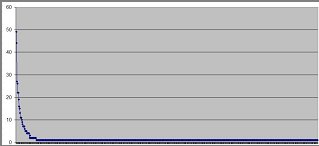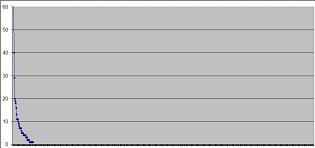Click here; analyzing a natural link profile
21 Sep
After I read Joost de Valk‘s SEO minded reply to the post about To click here or not to click here from Copyblogger.com, I just had to try and see if I could come up with a good example about anchor text differentiation. While this focus isn’t on the same point as the original post anymore (optimizing ‘click here’-click through rates), it’s always fun to investigate stuff like this.
Please note that the link profile of a random page isn’t the same as the link profile of the home page of a website. If you analyze all anchor texts used in links pointing to a home page, you’ll see a substantially higher percentage of URL only links (www.mydomain.com), company name only links (My Domain) and image/ logo links. Also, within the SEO/ tech/ blogging/ etcetera industry, the use of targeted anchor text is much higher than within, for example, the knitting niche.
Ok, that was the ‘disclaimer and this is why this blog post isn’t entirely correct but it’s mainly for entertainment purposes anyway’-part. Off to the fun stuff; investigating other peoples’ link profiles with Jim Boykins recently updated neat-o link analysis tool. This bookmark-to-the-max ninja tool absolutely rocks!
Natural link profile
Let’s analyze the We Build Pages link profile. Why? Because it’s a natural link profile (well, at least the majority of the links) and because developing kick ass tools like this just deserves a few more backlinks. The Neat-o tool found 878 links to analyze, that are pointing to the WeBuildPages.com domain. With the anchor text “[not found]” removed, 723 links remain. These 723 links used a stunning total of 337 different, unique anchor texts. The top 1% (or the Top 7) anchor texts used:
1. internet marketing (49)
2. we build pages (44)
3. webuildpages (27)
4. cool seo tool (26)
5. jim boykin (23)
6. http://www.webuildpages.com/neat-o/ (22)
7. http://www.webuildpages.com/cool-seo-tool/ (22)
If you substract the total of links (723) with one of the top 1% used anchor texts (213), only 510 links remain. This means that the top 1% anchor texts has a uniqueness (or differentiation) of 3% (7 anchor texts/213 links) and the other 99% of the anchor texts has a uniqueness of 65% (330 anchor texts/510 links).
Artificial link profile
Now let’s try to dive into an artificial link profile. Loren Baker spotted a great example recently. The Neat-O tool finds 996 links pointing to iDealPaydayLoans.com, with 44 different anchor texts. With all links with a [not found] anchor text removed, 803 remain. The top 1% anchor text (the top 8 ) of these links is as follows:
1. payday loans (297)
2. payday loan (187)
3. pay day loans (74)
4. online payday loans (40)
5. no fax payday loans (29)
6. fast payday loans (20)
7. loan payday (19)
8. payday loans online (18)
If you substract the links with one of the top 1% used anchor texts (685) from the total of 803, only 118 links remain. This means that the top 1% anchor texts has a uniqueness (or differentiation) of only 1,2% (8/685) and the other 99% of the anchor texts has a uniqueness of barely 30% (35/118).
This means what?
Unlike in the WeBuildPages link profile, there is no company name- or URL only-anchor text in the top 1% anchor texts used in links pointing to iDealPaydayLoans.com. Considering this, together with the total anchor text differentiation (only 5,5%, compared to WBP’s 46,6%) and the calculations above, it shouldn’t be very hard for Google to spot unnatural link profiles.

3 Responses to “Click here; analyzing a natural link profile”